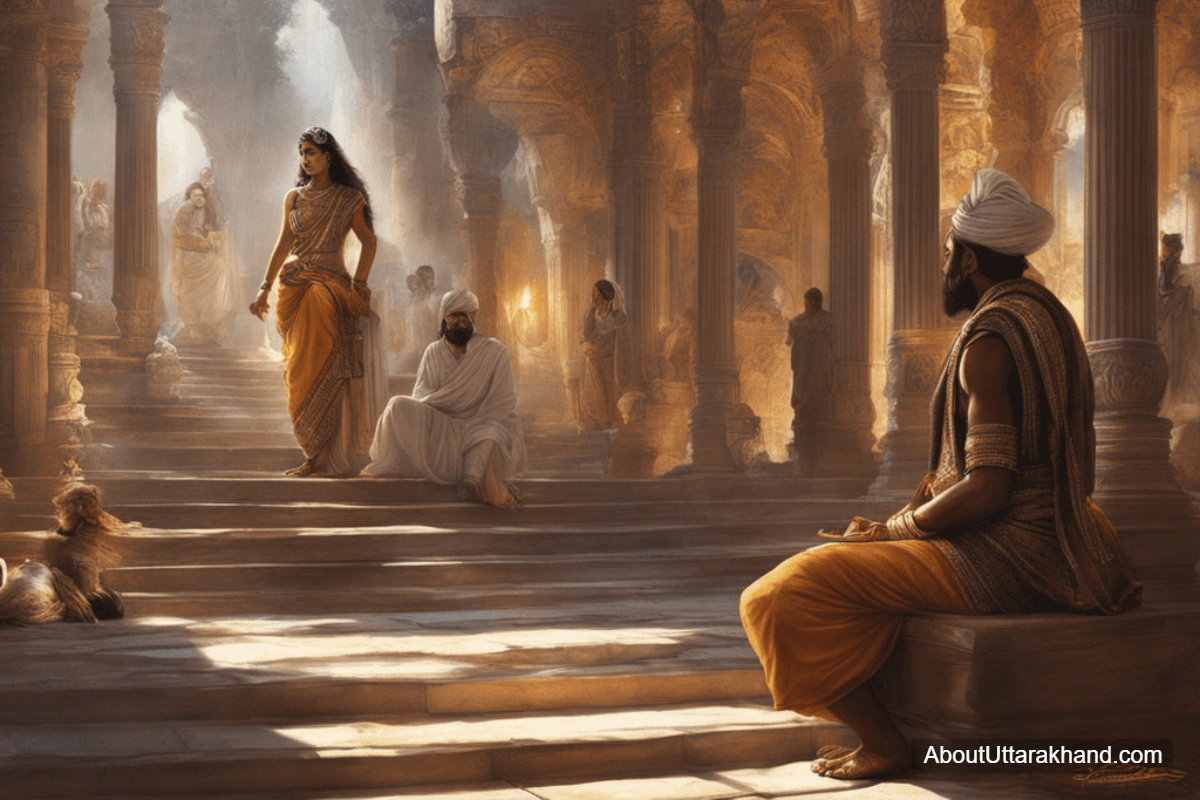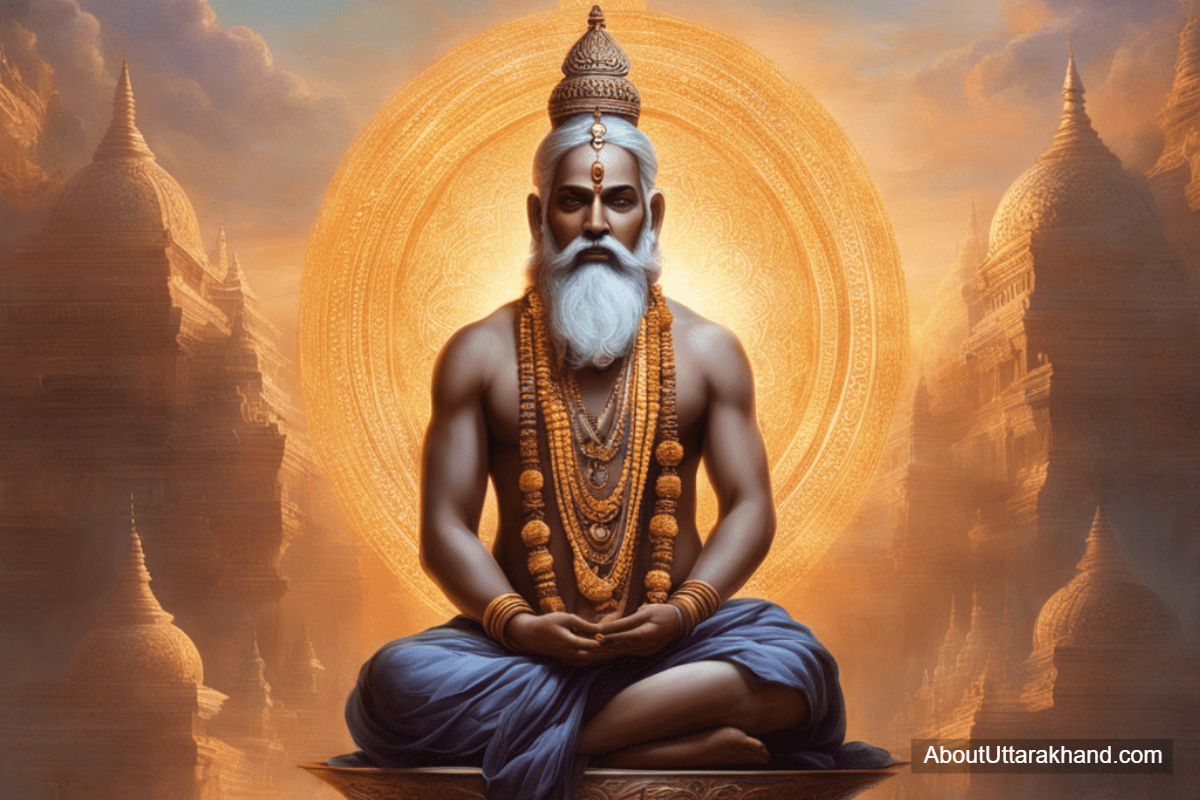Varna In Hinduism
An essential part of Hinduism is the concept of varna, which is a social stratification according to one's profession, family line, and other inherited characteristics. The concept of Varna, which appears in old texts such as the Rigveda, classifies people into four main social groups: Brahmins, Kshatriyas, Vaishyas, and Shudras. Every Varna plays an important role in society by carrying out its own unique set of obligations and responsibilities. However, variables like as income, education, and regional differences have contributed to the system's complexity as it has developed and grown over the years.
Table of Contents
Varna In HinduismDetails About Varna In Hinduism
Brahmins
Kshatriyas
Vaishyas
Shudras
Importance of Varna system In Hinduism
Some Facts About Varna In Hinduism
To Conclude

Varna In Hinduism | Photo: AboutUttarakhand.com
Details About Varna In Hinduism
Upholding intellectual and spiritual pursuits has long been the responsibility of the Brahmins, who historically hold the highest place in the Varna system and are priests and academics. Among their duties is the protection of sacred information, the execution of rites, and the provision of ethical and moral direction to society. The warrior-ruling class, or Kshatriyas, have an obligation to defend society, uphold justice, and control the nation. By participating in commerce, agriculture, and trade, Vaishyas contribute to a prosperous and stable economy. The most basic members of society, the Shudras, are indispensable because of the work and services they give.
Brahmins

Brahmins - Varna In Hinduism | Photo: AboutUttarakhand.com
The original Brahmin caste is charged with the responsibility of maintaining and passing on sacred knowledge through rites, instruction, and study of scripture. Perform religious rites, provide spiritual counsel, and ensure ritual purity; these are their principal responsibilities. Though they have always been held in high esteem, contemporary Brahmins are subject to criticism for maintaining their exclusive status, which sparks discussions over the usefulness and equity of their social standing.
Kshatriyas

Kshatriyas - Varna In Hinduism | Photo: AboutUttarakhand.com
Protecting society from outside dangers, enforcing justice, and ruling over regions are all responsibilities of the Kshatriya warrior class. Throughout history, they exerted immense authority as protectors, commanders, and bureaucrats, guaranteeing the safety and soundness of the kingdom. There are still areas where Kshatriyas hold sway in politics, the military, and leadership positions, even though their power is waning in the current era.
Vaishyas

Vaishyas - Varna In Hinduism | Photo: AboutUttarakhand.com
The agricultural and merchant Vaishyas are vital to the economy through their work in farming, trading, and commerce. Wealth creation, resource management, and societal economic progress are all their responsibilities. Though Vaishyas have always been linked to commerce and enterprise, they have now branched out into many other fields, enriching both the modern workforce and international marketplaces.
Shudras

Shudras - Varna In Hinduism | Photo: AboutUttarakhand.com
Originally from the lowest social stratum, the Shudras play a crucial part in society as a whole by supporting other Varnas and offering their services and labour. Communities and infrastructure rely on their a wide variety of physical labour and skilled handicraft jobs. The Shudra caste has a long history of social and economic inequality within Hindu society, notwithstanding the vital role they have played.
Importance of Varna system In Hinduism
Hinduism's Varna system was created to make it easier for people to divide up the work in society. Based on their Varna, each person was given certain duties and jobs to do. The goal of this method was to create a social order that worked so that everyone could do their jobs based on their own strengths and weaknesses. The Varna system also tried to keep the peace by setting rules for how different groups could work together and help each other.
Also, the idea of Varna is a big part of Hinduism. The Vedas and the Manusmriti particularly are based on this idea. The scriptures stress how important it is to do what you're supposed to do in the cosmic hierarchy by listing the duties and rewards that come with each Varna.
As the Varna system became more common in Hindu society, it changed how people interacted with each other, how they got married, and how they did business. Being born into a certain Varna often determined your social rank. It also affected how you thought about cleanliness, pollution, and how people were ranked in society.
The Varna system has been around for a long time, but it has changed and moved forward to fit current values and situations. It is still an important part of Hindu culture and identity, even though people inside and outside of Hinduism criticise and talk about it.
In the end, the Varna system grew out of Hinduism as a way to organise society, assign roles, and keep the peace by using natural traits and work divides. It has had different effects on Hindu culture and society over the years, but it is still very much alive and well.
Some Facts About Varna In Hinduism
The Varna system has been around for a long time, but it has changed and taken on different forms in many places and cultures. Modern Hindu civilizations show more mobility and fluidity in social stratification, although the classical Varna hierarchy is still important. The strict borders of the caste system are being challenged by factors like education, economic status, and professional accomplishments, which now significantly influence one's social standing.
Moreover, the Varna system has faced controversy and criticism from both Hindus and non-Hindus. Certain groups are denied equal opportunities and rights under the caste system, which critics say fosters discrimination, inequality, and social injustice. There have been social reforms and legislative initiatives to promote equality and social justice as a result of the fight to end caste-based discrimination.
But some who support the Varna system say it's necessary for society's structure and stability. They maintain that the community benefits from the distinct contributions of each Varna, which promotes unity and interdependence. Furthermore, they highlight Varna's spiritual importance, seeing it as a mirror of the divine hierarchy and cosmic order present in the cosmos.
Various parts of Hindu culture, such as marriage, education, and politics, are still impacted by Varna, despite the continuous reforms and disputes. Cultural conventions and social practices are highly influenced by Varna, even if there are ongoing initiatives to overcome caste-based distinctions.
Cat : Category Spiritual, CatF : Spiritual














To Conclude
In sum, the Varna system, which is central to Hinduism and has its origins in the scriptures and tradition, is still very much alive and well in modern India. Despite reflecting historical divides of labour and social inequality, its significance and ramifications are still up for debate. How Varna is understood and applied in contemporary settings may be influenced by changing societal ideals and objectives. An intricate understanding of Varna is crucial as we traverse the intricacies of Hindu tradition and its continuous quest for social justice and inclusivity. In other words, the Varna system, which has deep historical roots in India, is still an intricate and divisive part of Indian culture today.
The complex dynamics of this system reflect the rich historical history and variety of Hindu culture. Despite its usefulness in the past for social organisation and role allocation, its detractors say it keeps people in their social classes and makes it harder for them to move up the ladder. Recognising the historical importance of Varna as well as its modern incarnations is crucial for successfully navigating the complexities of Hindu society.In other words,Discussions around Varna need to progress in the future by welcoming new points of view and fighting for greater social and economic equality. As we continue this conversation, it is critical to hear from oppressed groups and to question long-standing injustices. A more just and inclusive society, in line with the spirit of Hindu teachings, can be our goal if we work to increase people's knowledge of Varna and what it means.

Belle Fable, keeps your trend ahead!
Gaumukh Glacier
The stunning Gaumukh Glacier, in the Uttarkashi region of Uttarakhand, India, is situated close to Gangotri and framed by the towering Garhwal Himalayas. Glaciers like this one attract tourists, hikers, and nature lovers from all over the globe because of the deep religious significance they have for Hindus as the headwaters of the holy Ganges River. The ascent to Gaumukh is an adventure in body and spirit, providing an opportunity to commune with the holy and the natural world.
Nandhaur Wildlife Sanctuary
The Nandhaur Wildlife Sanctuary is a haven for wildlife and stunning scenery, set in the tranquil hills of Uttarakhand. This sanctuary, in the Nainital District close to Haldwani, is a paradise for people who appreciate nature and animals. Its varied habitats, which include grasslands, ponds, and thick forests, have earned it recognition across its 269 square kilometers of territory.
Sonanadi Wildlife Sanctuary
The Sonanadi Wildlife Sanctuary invites animal lovers and nature lovers to come and enjoy the quiet beauty of Uttarakhand's serene surroundings. Hidden in the Nainital District, not far from Nainital, lies a refuge that begs to be discovered. Its varied wildlife and flora make this area, which covers around 301.18 square kilometers, a popular destination for ecotourists and those interested in biodiversity.
Binsar Wildlife Sanctuary
The Binsar Wildlife Sanctuary is a haven for wildlife and a monument to Uttarakhand's rich biodiversity, is situated in the picturesque Kumaon Himalayas. Nature lovers and wildlife aficionados will find this refuge, situated near Almora in the Almora District, to be a paradise. Covering about 47.04 square kilometers, it is famous for its verdant forests, varied fauna, and breathtaking views of the Himalayan mountains in the distance.
Tawaghat Wildlife Sanctuary
The Tawaghat Wildlife Sanctuary is a haven for adventurers and ecotourists, tucked away in the foothills of the towering Himalayas. This hidden gem of a sanctuary is located near Dharchula in Uttarakhand's Pithoragarh District. Despite its relatively tiny size (around 70 square km), this animal sanctuary is just as magical as any other.
Chilla Wildlife Sanctuary
.The Chilla Wildlife Sanctuary, located on the banks of the pure Ganges River, is a living monument to the beauty and variety of Uttarakhand's natural landscape. This sanctuary is a paradise for anyone who love nature and wildlife; it is located in the Pauri Garhwal District, close to Rishikesh. Covering over 249 square kilometers, it is a major wildlife sanctuary in the state that provides a peaceful haven amidst the majestic Himalayas.

